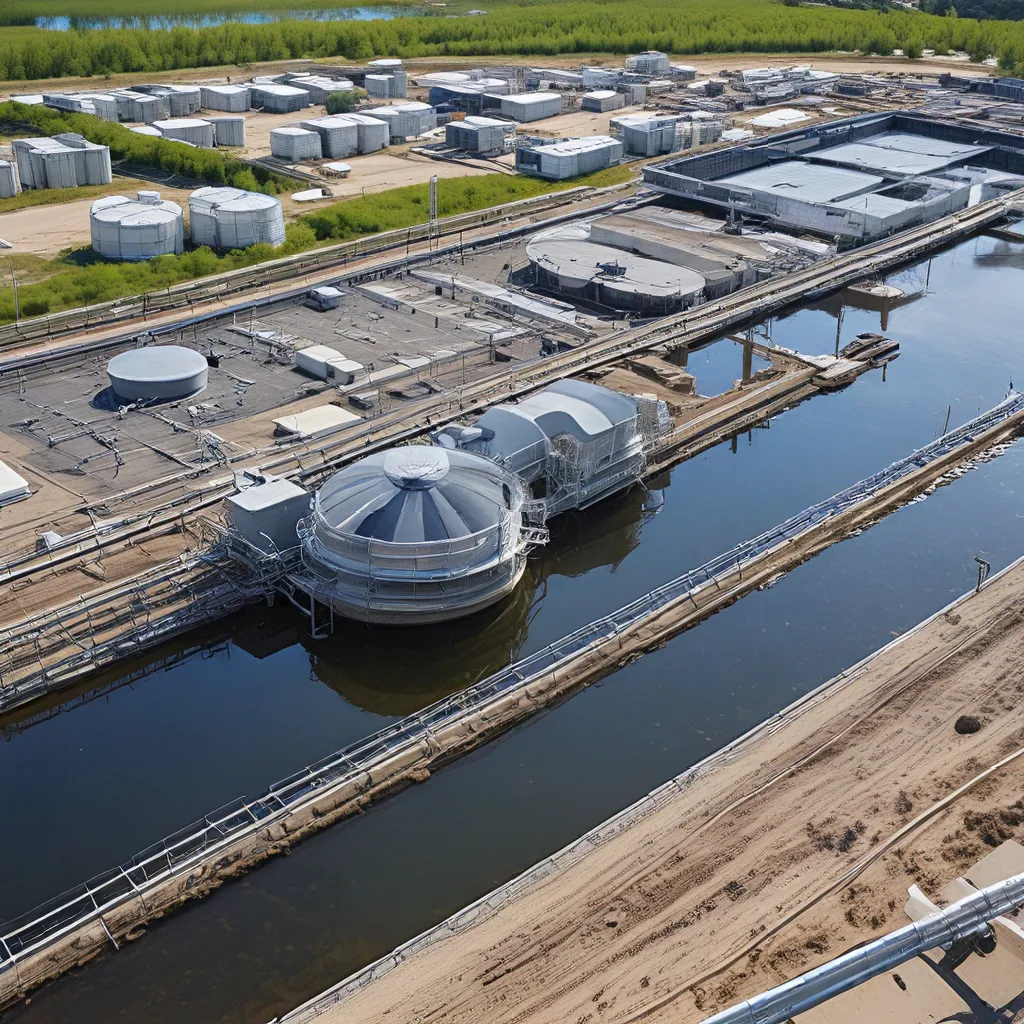
Picture yourself standing on the edge of a vast, underground research facility, peering into the depths of a world teeming with electric eels – not the kind you’d find in a tropical river, but the microscopic kind, buzzing with electricity deep within the Earth’s crust. This is the remarkable discovery made by researchers at the South Dakota School of Mines & Technology, and it could hold the key to revolutionizing wastewater treatment as we know it.
As I delve into this captivating subject, I can’t help but feel a sense of excitement and wonder. You see, these extremophile microbes – the electric eels of the microbial world – have evolved unique properties that may just hold the solution to one of our most pressing environmental challenges: purifying wastewater.
Unlocking the Power of Bioelectrochemical Systems
At the heart of this story are bioelectrochemical systems, a technology that harnesses the natural abilities of these remarkable microbes to generate electricity and facilitate wastewater treatment. Imagine a world where the very act of treating our dirty water could also produce clean, renewable energy – a true win-win for both the environment and our wallets.
The researchers at the South Dakota School of Mines have been exploring this frontier, studying the intricate dance between these electricity-producing microbes and the materials we use to capture their power. And let me tell you, the results they’ve uncovered are nothing short of revolutionary.
Recent studies have shown that by wrapping these microbes in sheets of graphene, an ultra-thin form of graphite, the researchers have been able to dramatically improve the efficiency of electron transfer – the key to unlocking the full potential of bioelectrochemical systems.
Imagine a future where wastewater treatment plants are not only cleaning our water but also generating electricity in the process, all thanks to the unlikely heroes living deep beneath our feet. It’s a future that’s closer than you might think, and the team at the South Dakota School of Mines is leading the charge.
Harnessing the Power of Electric Microbes
As I mentioned, these electric eels of the microbial world are not your average microbes. They’ve evolved unique conductive properties that allow them to generate and transfer electrons, essentially acting as tiny natural batteries. And the researchers at the South Dakota School of Mines have been working tirelessly to unlock their full potential.
One of the key challenges they’ve faced is finding a way to efficiently transfer the electricity generated by these microbes to the electrodes and wires needed to capture it. But with the breakthrough of using graphene-wrapped microbes, they’ve found a way to dramatically improve the electron transfer kinetics, unlocking the true power of these remarkable organisms.
Just imagine the implications: wastewater treatment plants that can generate their own electricity, oil drilling operations that can clean saline wastewater, and even NASA space missions that can turn solid waste into clean energy. The possibilities are truly endless, and the team at the South Dakota School of Mines is at the forefront of this exciting frontier.
Pushing the Boundaries of Innovation
But the story doesn’t end there. The researchers at the South Dakota School of Mines are not content to simply rest on their laurels. They’re constantly exploring new frontiers, pushing the boundaries of what’s possible with these bioelectrochemical systems.
One area of particular focus is the development of microbial fuel cells – essentially tiny, living batteries that can generate electricity from organic waste. Imagine a world where we could power our homes, our businesses, and even our wastewater treatment services with the very waste we’re trying to get rid of. It’s a future that’s closer than you might think.
But the journey hasn’t been without its challenges. Uncertainty and complexity are ever-present, and the researchers are quick to acknowledge the limitations in their data and analysis. They know that there’s still much to be learned, and they’re not afraid to embrace the unknown.
As I listen to the researchers speak, I’m struck by their infectious enthusiasm and unwavering commitment to this field. They’re not just scientists – they’re visionaries, dreaming of a future where clean energy and sustainable wastewater treatment go hand-in-hand.
A Future Powered by Microbial Electricity
So, what does the future hold for these electric eels of the microbial world? Likely, they’ll continue to play a pivotal role in the development of bioelectrochemical systems, pushing the boundaries of what’s possible and unlocking new frontiers in renewable energy and wastewater treatment.
Some experts believe that we may one day see wastewater treatment plants that not only clean our water but also generate their own electricity, powering their operations and even feeding back into the grid. Possibly, we could see oil drilling operations that can clean their saline wastewater using these microbial technologies, reducing their environmental impact.
And who knows, maybe we’ll even see NASA space missions that can turn solid waste into clean energy, thanks to the remarkable abilities of these electric eels of the microbial world.
The truth is, the future is bright, and the researchers at the South Dakota School of Mines are leading the charge. So, as you flush your toilet or turn on the tap, take a moment to think about the electric eels deep beneath your feet, buzzing with the power to transform our world.